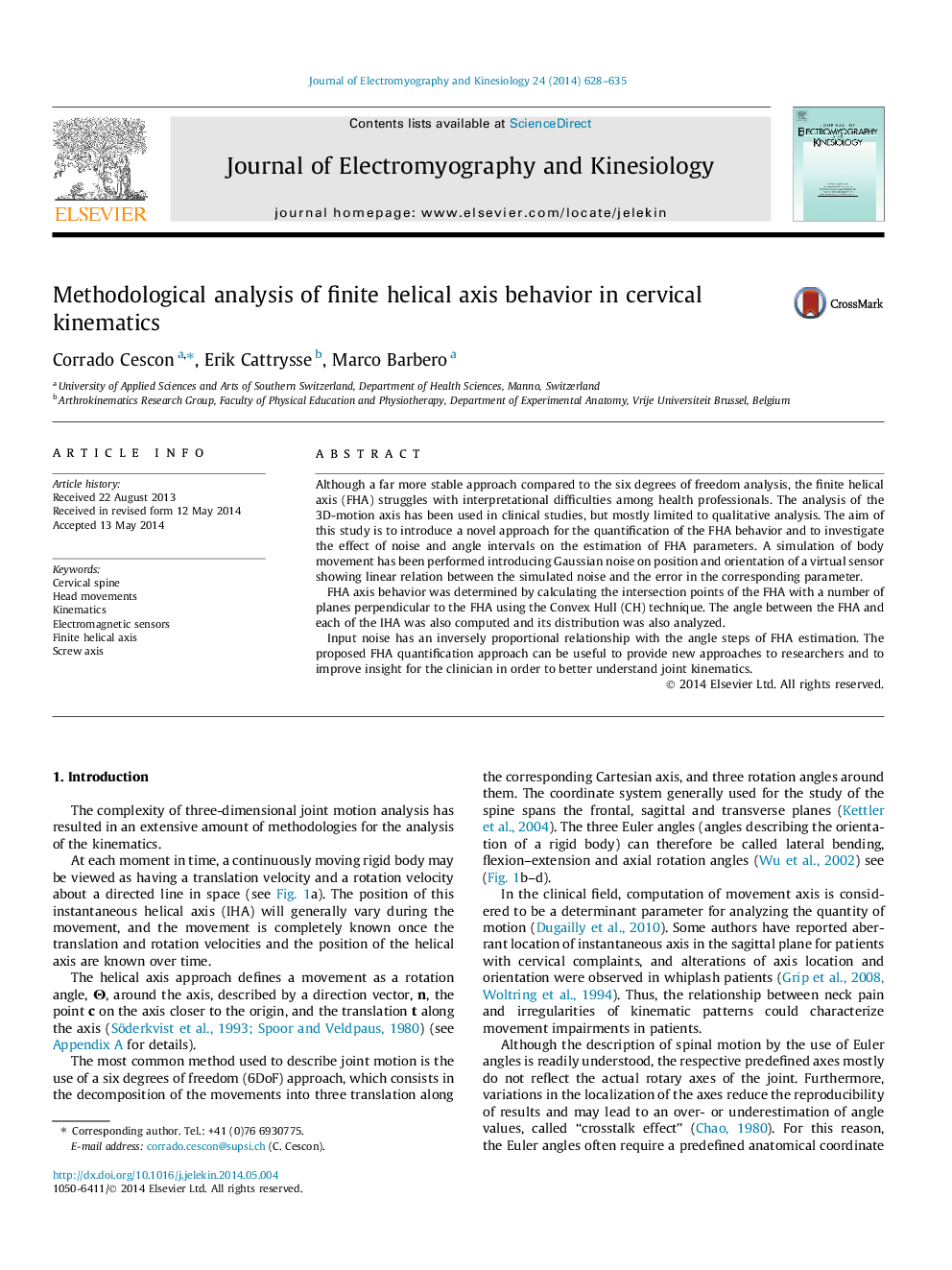| Article ID | Journal | Published Year | Pages | File Type |
|---|---|---|---|---|
| 4064558 | Journal of Electromyography and Kinesiology | 2014 | 8 Pages |
Although a far more stable approach compared to the six degrees of freedom analysis, the finite helical axis (FHA) struggles with interpretational difficulties among health professionals. The analysis of the 3D-motion axis has been used in clinical studies, but mostly limited to qualitative analysis. The aim of this study is to introduce a novel approach for the quantification of the FHA behavior and to investigate the effect of noise and angle intervals on the estimation of FHA parameters. A simulation of body movement has been performed introducing Gaussian noise on position and orientation of a virtual sensor showing linear relation between the simulated noise and the error in the corresponding parameter.FHA axis behavior was determined by calculating the intersection points of the FHA with a number of planes perpendicular to the FHA using the Convex Hull (CH) technique. The angle between the FHA and each of the IHA was also computed and its distribution was also analyzed.Input noise has an inversely proportional relationship with the angle steps of FHA estimation. The proposed FHA quantification approach can be useful to provide new approaches to researchers and to improve insight for the clinician in order to better understand joint kinematics.
